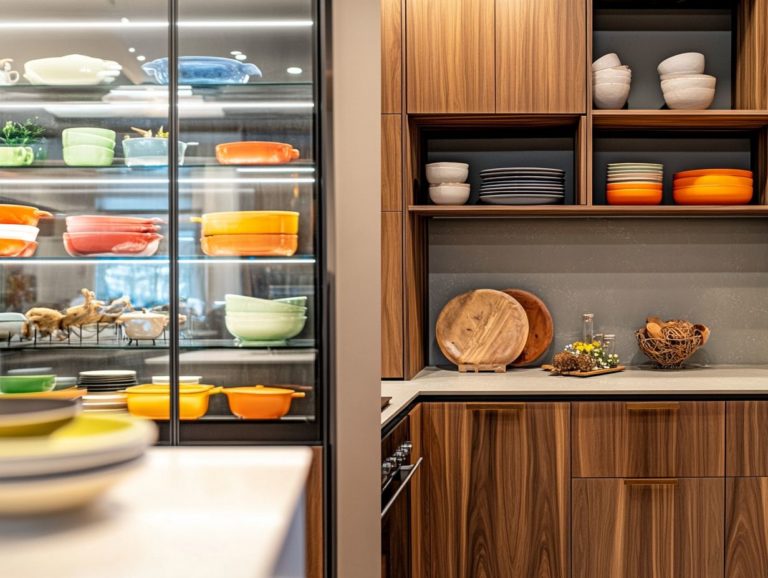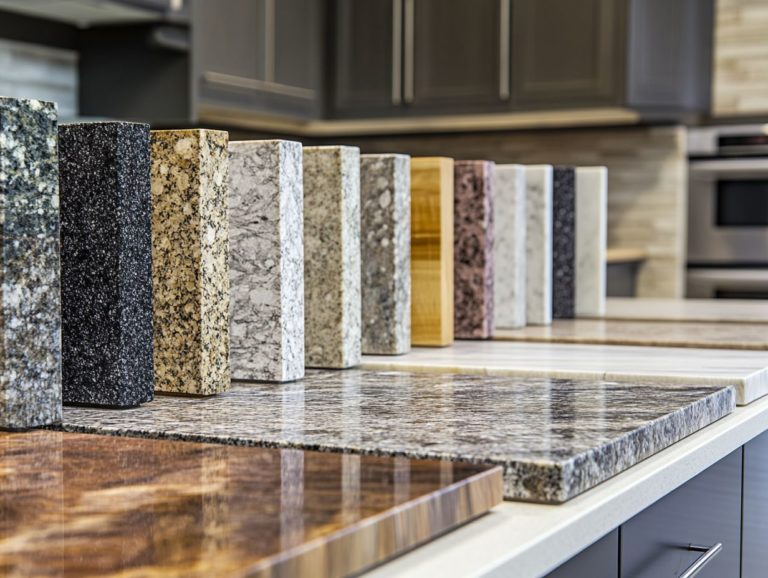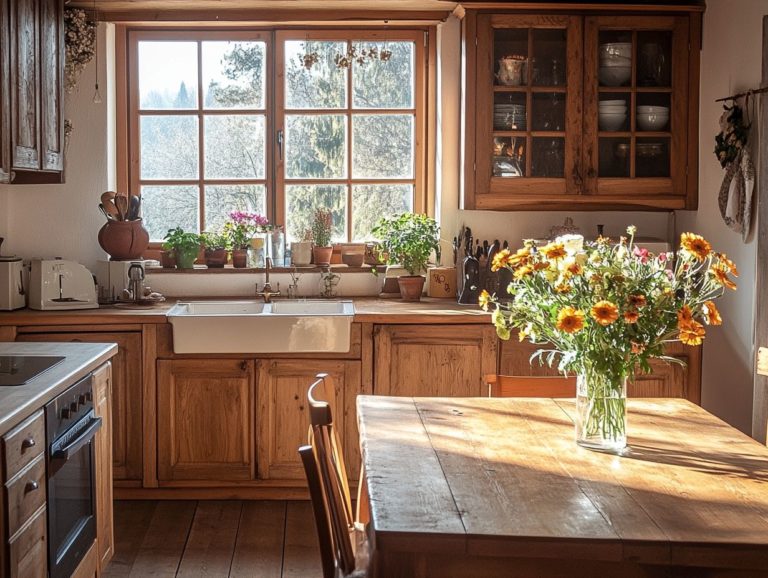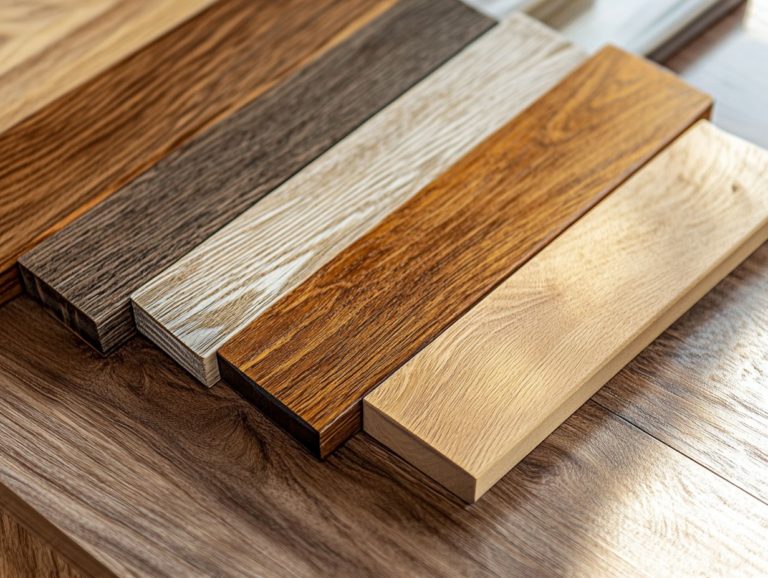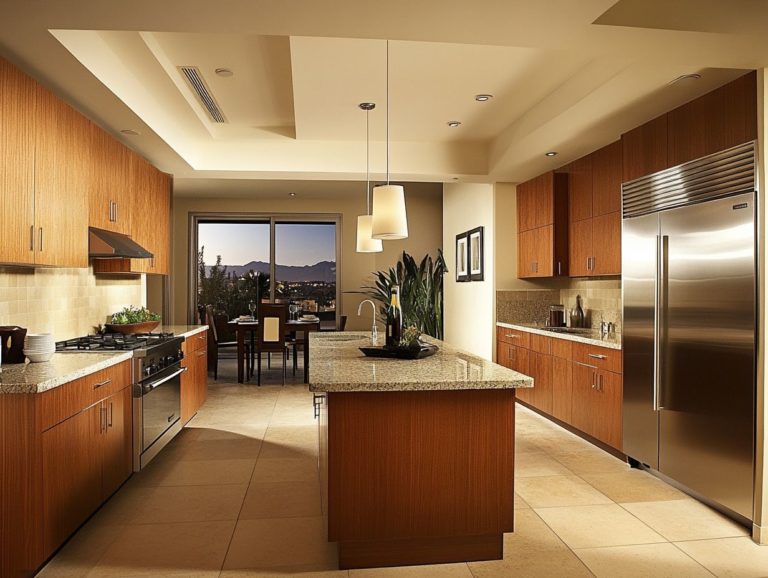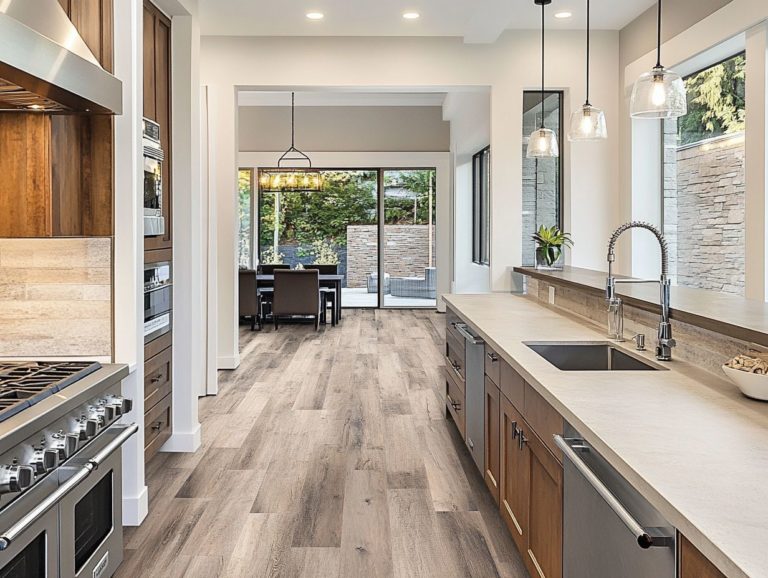How to Choose the Right Lighting Fixtures for Your Kitchen
Creating the perfect ambiance in your kitchen involves more than just picking out stylish fixtures; it’s about truly understanding your unique lighting needs.
From evaluating the specific areas that require illumination to exploring the diverse range of fixtures available, this guide will navigate you through the process. Key elements such as budget, style, and functionality will be examined, alongside strategic placement tips to optimize your tasks.
You’ll discover how to select energy-efficient options and maintain your fixtures in peak condition. Prepare to transform and brighten up your culinary space!
Contents
- Key Takeaways:
- Understanding Your Kitchen Lighting Needs
- Types of Lighting Fixtures
- Factors to Consider When Choosing Fixtures
- Placement and Layout of Fixtures
- Energy Efficiency and Sustainability
- Maintenance and Cleaning Tips
- Frequently Asked Questions
- What factors should I consider when choosing the right lighting fixtures for my kitchen?
- Can I mix different types of lighting fixtures in my kitchen?
- Which is better for my kitchen: LED or incandescent bulbs?
- How many lighting fixtures do I need in my kitchen?
- What type of lighting fixture is best for over a kitchen island?
- Can I install dimmer switches for my kitchen lighting?
Key Takeaways:
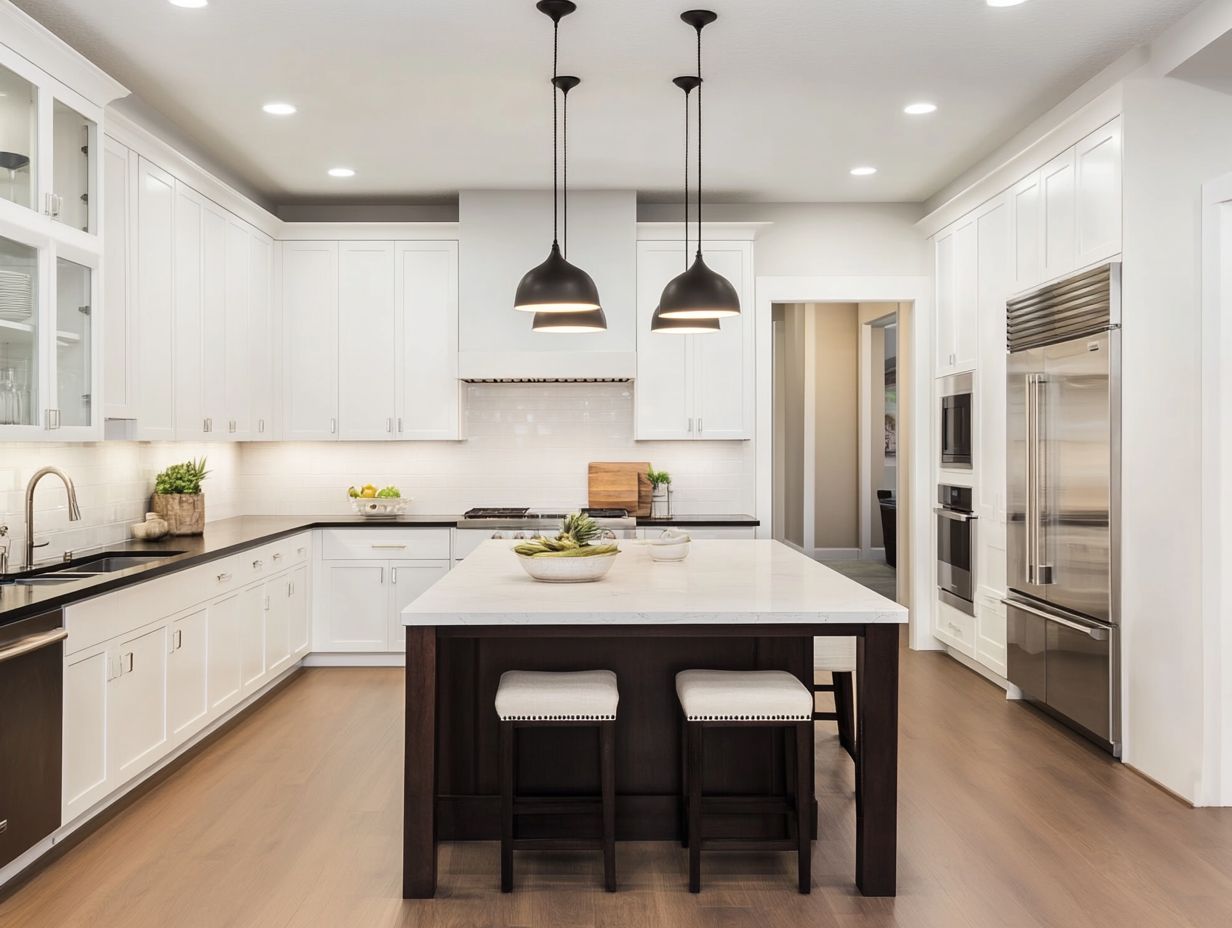
Assess your kitchen’s lighting needs based on different areas to determine the types and placement of fixtures required for optimum functionality.
Consider your budget, style, and functionality requirements when choosing fixtures to ensure they meet your needs and match your kitchen’s design.
Choose environmentally friendly and energy-efficient options to not only save money but also reduce your carbon footprint.
Regular maintenance and cleaning can also help prolong the lifespan of your fixtures.
Take the first step to elevate your kitchen today!
Understanding Your Kitchen Lighting Needs
Understanding your kitchen lighting needs is crucial for enhancing both functionality and aesthetics in one of the most vital areas of your home.
Effective kitchen illumination demands a thoughtful combination of task lighting, ambient lighting, and accent lighting. Each type of lighting should be tailored to your various culinary tasks and spaces.
Whether you’re preparing meals, entertaining guests, or basking in natural light, the right lighting schemes can significantly elevate your kitchen’s design.
Design experts highlight the importance of choosing appropriate lighting fixtures to harmonize with your overall kitchen aesthetic while addressing your unique requirements.
Assessing Lighting Requirements for Different Areas
Assessing the lighting requirements for various areas of your kitchen is essential to create a space that is both functional and inviting.
In the cooking zones, bright task lighting is key. It ensures your cutting boards and countertops are well-illuminated, allowing for precision during food preparation.
The dining area thrives on ambient lighting, which fosters a warm and welcoming atmosphere ideal for shared meals and engaging conversations.
Don’t overlook those under-cabinet spaces; strategically placed accent lighting can showcase beautiful tilework or add a gentle glow to the overall design.
Each type of lighting plays a distinct role, transforming your kitchen into a harmonious blend of utility and comfort.
Types of Lighting Fixtures
When you’re contemplating kitchen lighting, it’s essential to explore the diverse array of lighting fixtures at your disposal, each offering distinct benefits and styles.
Picture dazzling chandeliers that act as striking statement pieces, alongside functional pendant lights and recessed lights that lend a sleek, modern flair to your space.
LED lights are favored for their energy efficiency and longevity, enhancing the versatility of your kitchen’s illumination.
Choose the right fixtures to brighten your kitchen and make it a joy to cook in!
Overview of Different Types of Fixtures
Exploring the various types of lighting fixtures reveals their crucial role in transforming your kitchen into a well-illuminated and visually stunning space.
From sleek pendants gracefully hanging over the island to recessed lighting that softly brightens the room, each fixture has a specific purpose.
Task lighting, such as under-cabinet lights, ensures your meal preparations are both safe and efficient.
Meanwhile, ambient lighting, typically provided by ceiling-mounted fixtures, creates a warm and inviting atmosphere.
Decorative lighting options, like striking chandeliers, not only elevate the overall aesthetic but also infuse character into your kitchen.
Understanding these distinctions is essential for achieving harmony between practicality and beauty in your culinary sanctuary.
Factors to Consider When Choosing Fixtures
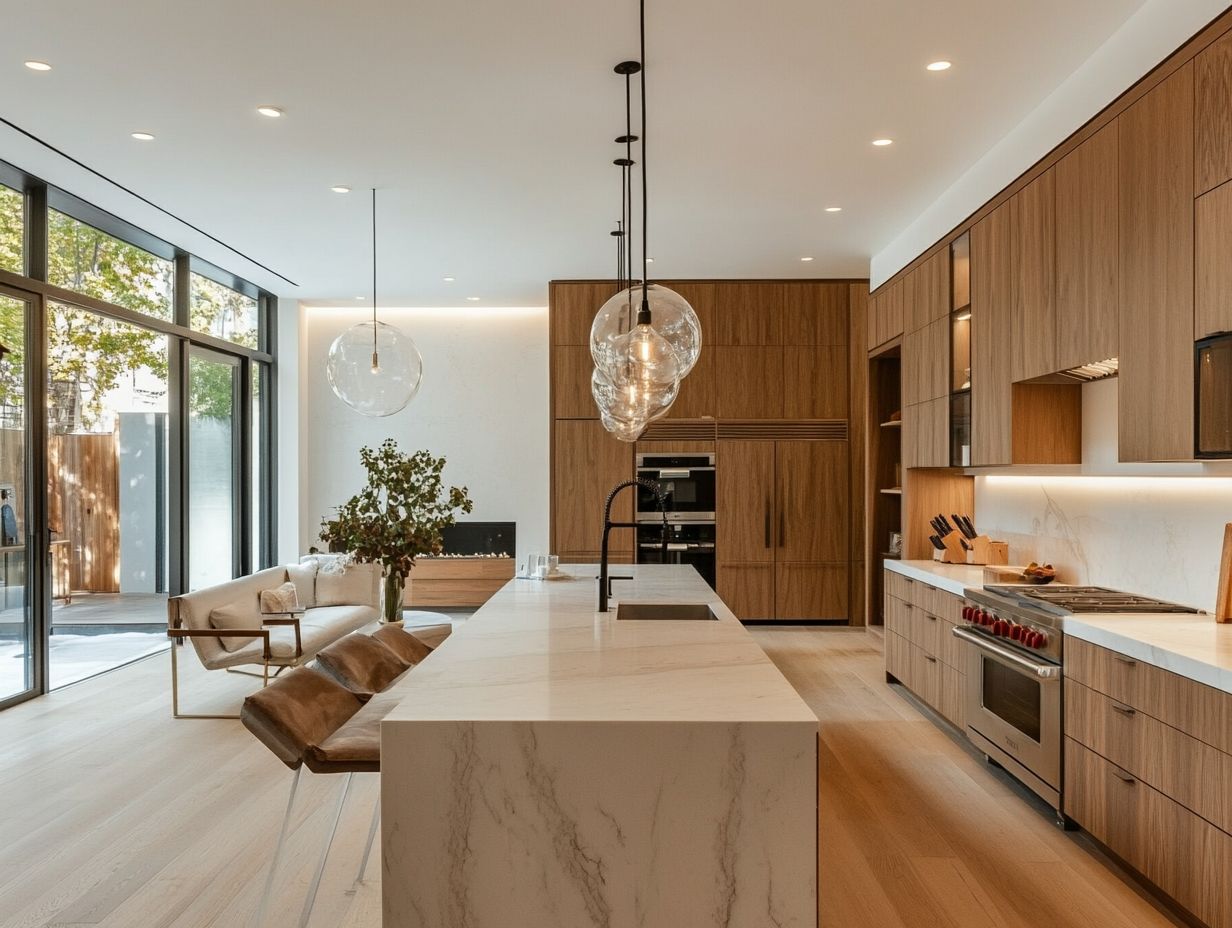
Choosing kitchen lighting fixtures involves several factors. Ensure they match your kitchen design and work well for your needs.
Consider your budget, style, and functionality while exploring options. Insights from design experts can guide you through this journey.
You can lean towards cost-effective LED lights or opt for exquisite pendant fixtures. Understanding how these parts fit together will help you create a stylish and functional lighting scheme.
Budget, Style, and Functionality
Your choices in kitchen lighting depend on three key components: budget, style, and functionality. These factors shape your space’s look and improve its practicality.
A well-lit kitchen island can become the heart of your cooking activities, offering visibility for food preparation.
For budget-friendly options, consider affordable LED recessed lights. They provide great brightness without breaking the bank.
Want elegance? Ornate pendant lights can enhance the room’s charm.
To balance ambiance and practicality, layer task-focused lighting, like under-cabinet lights, with soft, dimmable ceiling fixtures. This setup works well for cooking and entertaining.
Placement and Layout of Fixtures
The placement and layout of lighting fixtures in your kitchen are crucial. They ensure proper illumination for various tasks, enhancing safety and efficiency.
A thoughtful arrangement boosts task and accent lighting, guiding the eye and enhancing the overall look.
Consider under-cabinet lights for work surfaces or decorative pendant lights over the dining area. Strategic placement makes a significant difference in functionality and atmosphere.
Optimizing Lighting for Different Tasks
Optimizing lighting for different tasks in your kitchen means selecting the right task and accent lighting. This enhances both efficiency and enjoyment while you cook.
When preparing food, bright task lighting is vital. It ensures that every ingredient is visible and reduces accidents.
Use indirect lighting over the stove to improve visibility without harsh shadows. This creates a safer cooking environment.
For entertaining, blend ambient and accent lighting. This transforms the space into a warm, inviting area, showcasing your culinary masterpieces.
Balancing different lighting types not only improves practicality but also adds elegance to your kitchen.
Energy Efficiency and Sustainability
Energy efficiency and sustainability are essential when selecting kitchen lighting. They help meet both aesthetic and functional needs.
Choose energy-efficient fixtures, like LED lights, to lower energy use while enjoying beautiful lighting. Prioritizing eco-friendly options saves you money and protects our planet.
Choosing Environmentally Friendly Options
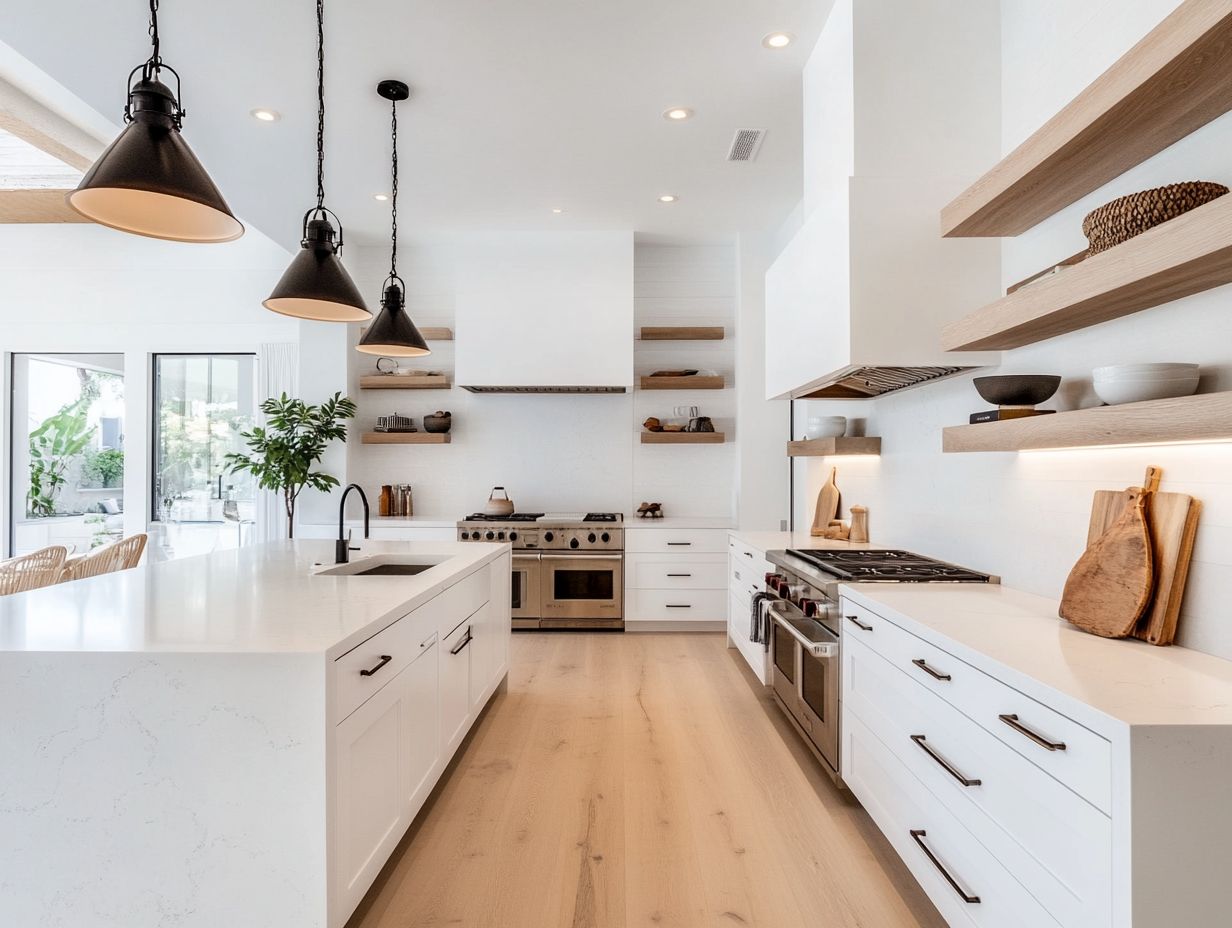
Choosing eco-friendly options for your kitchen lighting is more than a trend. It’s a commitment to saving energy and improving your space’s look.
By opting for LED lights and other sustainable fixtures, you can significantly reduce energy consumption. This choice allows you to watch your electricity costs decrease over time.
Using these modern lighting options helps you illuminate your kitchen with a warm, inviting glow while making a conscious effort to lessen your ecological footprint.
LED lights last longer and use less energy, enhancing your living environment sustainably. They align your aesthetic preferences with environmental responsibility.
The versatility of these fixtures opens up creative design possibilities. You can cater to diverse styles, merging functionality with elegance in any kitchen layout.
Maintenance and Cleaning Tips
Maintaining and cleaning your kitchen lighting fixtures is crucial for preserving their condition. This ensures they perform at their best over time.
Regular upkeep keeps your fixtures functional and appealing in your kitchen design.
By adopting straightforward cleaning tips and maintenance routines, you can guarantee effective illumination for culinary tasks and social gatherings.
Keeping Your Fixtures in Good Condition
Maintaining your kitchen lighting fixtures requires regular cleaning and proactive practices. Dusting the fixtures regularly prevents accumulated grime that can dull their brightness.
Check the bulbs for burnouts and replace them as necessary. Doing so boosts illumination and helps conserve energy.
Inspect the connections and mounts frequently. This ensures everything is securely installed, preventing unexpected detachment.
By following these maintenance routines, you can enjoy a well-lit kitchen that is both safe and visually appealing. This makes meal prep and entertaining a true pleasure.
Frequently Asked Questions
What factors should I consider when choosing the right lighting fixtures for my kitchen?
Some important factors to consider are the size and layout of your kitchen, the purpose of the lighting, and the overall style and design of your kitchen.
Can I mix different types of lighting fixtures in my kitchen?
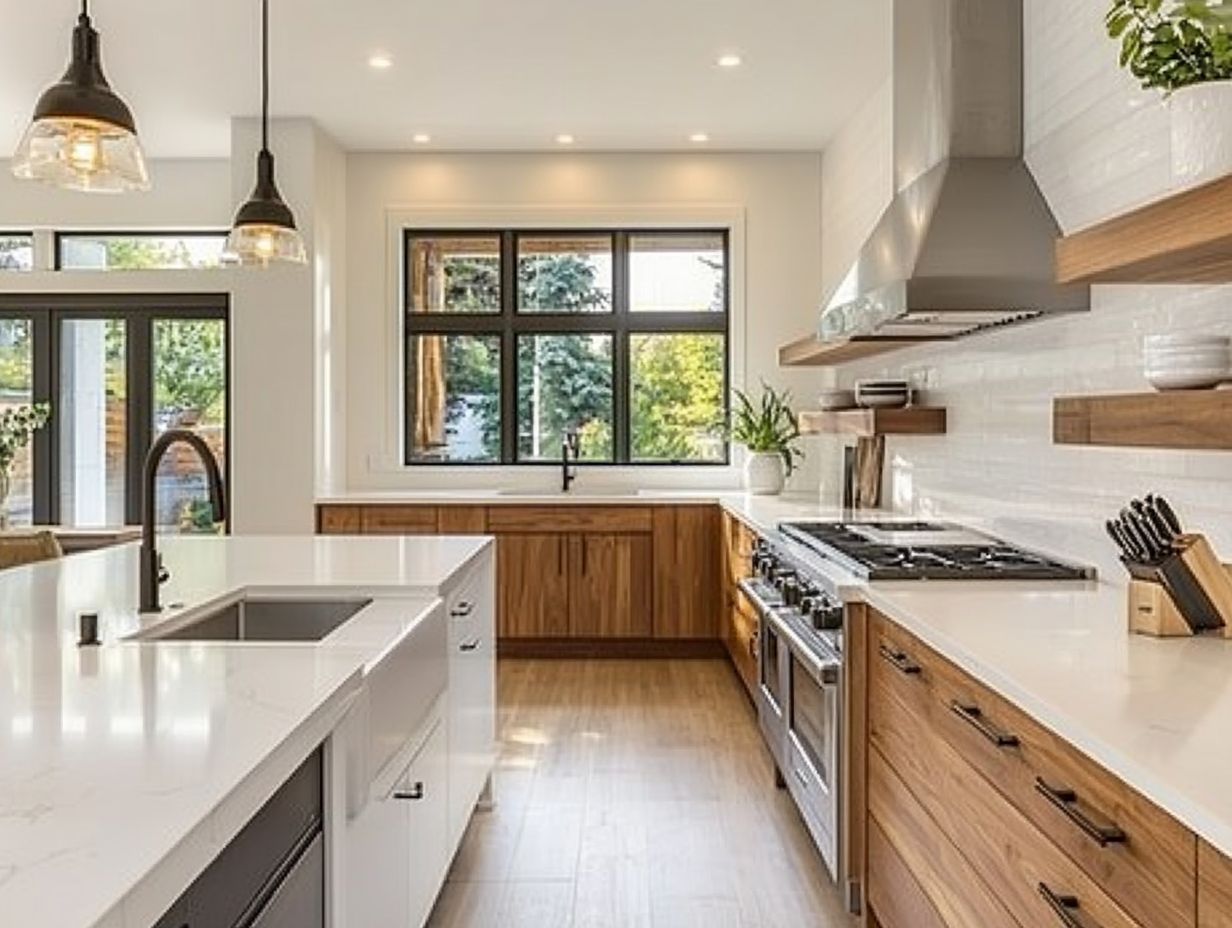
Yes, mixing different types of lighting, such as recessed and pendant lights, can create a layered and visually appealing look in your kitchen.
Which is better for my kitchen: LED or incandescent bulbs?
LED bulbs are more energy-efficient and have a longer lifespan. This makes them a better choice for kitchen lighting. However, if you prefer warmer light, incandescent bulbs may be a better option.
How many lighting fixtures do I need in my kitchen?
The number of lights you need depends on your kitchen’s size and layout. A general rule of thumb is to have one fixture for every 4-6 square feet of kitchen space.
What type of lighting fixture is best for over a kitchen island?
Pendant lights are a popular choice for over a kitchen island. They provide focused task lighting and add a decorative element to the space.
Can I install dimmer switches for my kitchen lighting?
Yes, installing dimmer switches gives you more control over the brightness and ambiance of your kitchen. This is especially useful for dining areas or creating a relaxed atmosphere in the evening.
Don’t wait! Start using energy-efficient LED lights today to enjoy a beautifully lit kitchen and lower energy bills!
